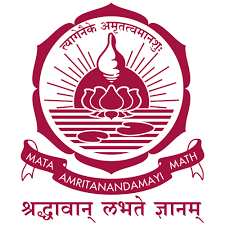Ramaiah Institute of Technology Bangalore (RIT) has consistently demonstrated robust placement performance, cementing its position among India’s top technical institutions. With a legacy of academic excellence and industry-aligned training, the institute offers diverse opportunities across engineering, management, and computer applications disciplines. Below is a detailed analysis of RIT’s placement landscape, supported by recent data and industry trends.
The institute maintains strong relationships with over 350 companies annually, resulting in placement rates exceeding 75% across most programs. While computer science-related disciplines dominate high-salary offerings, core engineering branches continue to attract established industry players. The following table summarises key placement metrics across major programs.
- Ramaiah Institute of Technology Placement Overview
- Ramaiah Institute of Technology Industry Alignment and Emerging Opportunities
- Ramaiah Institute of Technology Skill Development Framework
- Ramaiah Institute of Technology Challenges and Strategic Responses
- Ramaiah Institute of Technology Future Outlook
Ramaiah Institute of Technology Placement Overview
Ramaiah Institute of Technology Industry Alignment and Emerging Opportunities
The placement cell actively collaborates with companies to design industry-academia partnerships, including live projects and pre-placement offers. This strategy proves particularly effective in newer domains like AI/ML, where 40% of placed students receive offers through internship conversions. Startup recruitment has increased by 25% over three years, with Bengaluru-based unicorns frequently participating in campus drives. This trend complements traditional recruitment from manufacturing giants and IT service providers, creating a balanced opportunity spectrum.
Ramaiah Institute of Technology Skill Development Framework
RIT’s four-stage placement preparation model ensures students develop technical competencies and soft skills:
- First-year foundation program: Focus on coding basics and communication workshops
- Industry certification tracks: Domain-specific courses in collaboration with Microsoft, AWS, and Autodesk
- Summer internship mandate: Compulsory industry exposure after the third year
- Mock interview series: Sector-specific practice sessions with HR professionals. This structured approach helps 68% of students secure offers by the seventh semester, reducing final-year placement pressure.
Ramaiah Institute of Technology Challenges and Strategic Responses
While CS and AI/ML programs thrive, core engineering branches face salary disparity challenges. The institute addresses this through:
- Dual-degree programs combining mechanical engineering with data science
- Cross-disciplinary projects with computer science departments
- Enhanced collaboration with PSUs and R&D organisations
The placement cell also reports growing interest in higher education options, with 15-20% of graduates pursuing master’s programs at top global universities annually.
Ramaiah Institute of Technology Future Outlook
Recent investments in smart campus infrastructure and AI research centres position RIT to capitalise on emerging technologies. With the Indian tech sector projected to grow at 8.4% annually, the institute’s focus on adaptive learning systems and industry micro-credentials should further strengthen placement outcomes across all disciplines. Prospective students should consider this dynamic environment – while CS and AI/ML offer immediate high returns, core engineering branches provide long-term growth potential in India’s expanding manufacturing and infrastructure sectors. The consistent 7-8 LPA average across diverse programs underscores RIT’s balanced approach to technical education and career readiness.










